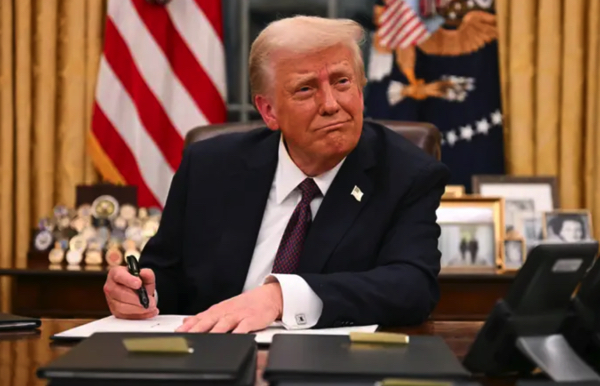 Parler
Parler Gab
Gab
- Intel plans to cut over 20% of its workforce—nearly 22,000 jobs—to reverse slumping sales and competition losses.
- CEO Lip-Bu Tan aims to dismantle bureaucracy, centralize engineering decisions, and accelerate cost-saving measures.
- Intel struggles in AI as rivals like Nvidia and TSMC dominate, despite previous layoffs under ex-CEO Gelsinger.
- Morale is low with talent fleeing to competitors, risking delays in critical projects like 18A chip tech.
- Analysts warn the restructuring is a high-stakes gamble, not a guaranteed turnaround for Intel’s declining market position.
Tan’s vision: Stripping bureaucracy to save Intel
CEO Tan, who took over in March 2025, has already signaled a willingness to confront Intel’s structural flaws. In a speech at a recent company conference, Tan bluntly stated, “Bureaucracy kills innovation.” Sources indicate ongoing plans to dismantle layers of middle management, centralizing decision-making with engineers and product developers. These reforms aim to address chronic delays and outdated manufacturing processes that have allowed competitors like Taiwan’s TSMC and AI-focused Nvidia to eclipse Intel’s once-unsurpassed edge in chip design. The strategy also targets costs: Intel’s merchant foundry initiative, now being accelerated under Tan, seeks to position the firm as a contract manufacturer for other companies’ chips. However, skeptics argue Intel’s recent struggles—as seen in shelving its top-tier Falcon Shores AI chipline for internal testing—reinforce skepticism about its ability to regain traction in the AI field.Losing the AI race
The elephant in the room is artificial intelligence. While Nvidia and TSMC have reaped windfall profits from AI-driven chip demand, Intel’s slow response has left it behind. Its former CEO, Pat Gelsinger, a former darling of Wall Street, admitted prior layoffs were due to struggles capitalizing on AI trends. Gelsinger, sacked by Intel’s board in December 2024, had overseen $10 billion in cost-saving measures targeting 2025. His tenure saw two rounds of layoffs—one eliminating 12,000 roles in 2022, another 15,000 in 2024—yet did little to stem a 60% drop in Intel’s stock value in 2024. While corporate media circles blame President Trump’s China tariffs for Intel’s troubles, exemptions for computer parts have shielded the sector. Yet geopolitical tensions loom large: Intel’s April earnings report, due April 25, will provide critical insight into whether it can withstand escalating U.S.-China trade friction.Intel's operational risks
The downsizing comes amid already-low morale. Sources inside Intel describe a company roiled by turnover, with coders and engineers fleeing to startups or rivals like Nvidia. One insider worried that further cuts would stifle efforts to launch 18A, Intel’s next-gen chip-manufacturing tech critical to reclaiming market share from TSMC. Federal Reserve interest rates, high-stakes trade negotiations, and the global AI arms race have made this an especially risky time for reshaping operations. Still, the exodus of mid-tier managers might speed up decision-making. Intel’s future rests on whether Tan’s reforms outpace the competition. With 21,000 jobs on the chopping block, this is more than a cost-cutting maneuver; it’s a cultural shift aimed at stripping away decades of red tape that stifled innovation. But beating back NVIDIA’s AI momentum—and reclaiming its semiconductor crown—will require more than closing offices. As investors cheered a 5.5% stock surge on Wednesday, analysts cautioned the moves are a “necessity, not a guarantee.” For the 200,000-plus employees worldwide counting on Intel’s turnaround, only time will tell if this is a strategic pivot or a fatal blow to a tech giant in decline. Sources for this article include: TheNationalPulse.com Finance.Yahoo.com Finance.Yahoo.com Mashable.com Inc.comThe fight for free speech: Substack stands firm against censorship pressure
By Willow Tohi // Share
Brave’s Cookiecrumbler offers a smarter, more private solution to annoying cookie banners
By Willow Tohi // Share
URGENT REPORT: The China Import Embargo – What to Stockpile Now Before America Runs Out
By Mike Adams // Share
How digital illusions erode mental health and self-worth in the age of artificial acceptance
By Lance D Johnson // Share
Avoiding insurance scams: Tips every prepper and consumer needs to know
By Zoey Sky // Share
Governments continue to obscure COVID-19 vaccine data amid rising concerns over excess deaths
By patricklewis // Share
Tech giant Microsoft backs EXTINCTION with its support of carbon capture programs
By ramontomeydw // Share
Germany to resume arms exports to Israel despite repeated ceasefire violations
By isabelle // Share










